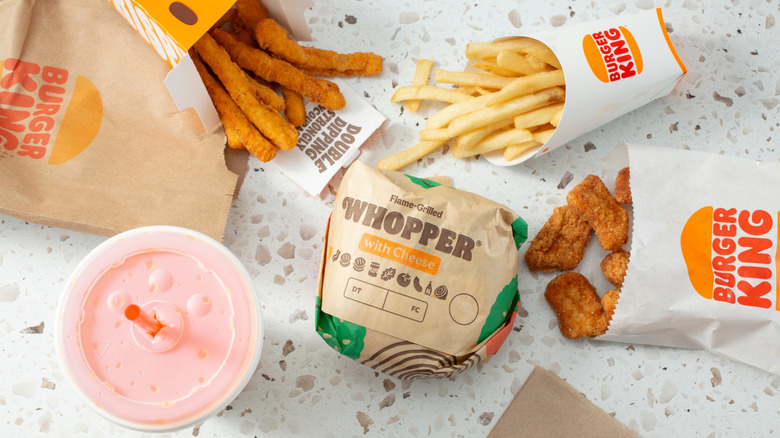The Strange Time When Burger King Temporarily Retired Its Mascot
For many fast food chains, mascots are a big part of branding. What would McDonald's be without Ronald McDonald, or Wendy's without Wendy, the red-headed, freckled girl right in the middle of its logo? However, some mascots are a lot more forgettable, including Burger King's. And there's a good potential reason for this: Burger King retired him back in 2011.
Unsurprisingly, his name is "the King," and he would typically appear dressed in extravagant, medieval-style robes and a crown emblazoned with the Burger King logo. (His medieval style is arguably an anachronism, as the modern day version of the hamburger wasn't invented until around the 1800s.) The King wasn't exactly a beloved icon. With a large plastic head and unchanging face, he was often regarded as creepy, a reputation that probably wasn't helped by a TV commercial in which he snuck into a sleeping man's bed to extol the virtues of Burger King. This stalkerish behavior was repeated in other ads, too. Even the chain's chief financial officer described the King as "creepy" to Bloomberg, saying the mascot scared away women and children. With that in mind, the chain unceremoniously retired the King. The reasoning was that the chain wanted to direct customers' attention to Whoppers and other menu items — instead of trying to make people laugh.
However, the King didn't stay dead
In defense of the King, the era when he vanished wasn't a great time for fast food mascots. McDonald's faced criticism that it used the appeal of Ronald McDonald to lure children into unhealthy eating habits. McDonald's pushed back that Ronald McDonald was not shown eating food. Nevertheless the burger giant sidelined Ronald McDonald to some extent (although he was never retired).
In any case, the concern for Burger King was reversing its declining profits. The chain saw increased sales in the years after putting the King out to pasture, even while faced with scandals like accusations of horse meat in its burgers. It's difficult to assess what effect (if any) the King's retirement and new approach to advertising had on this. However, the King didn't stay away for long, as he was revived in 2015, with the company's renewed belief that the mascot embodied the spirit of Burger King's brand. His return didn't get nearly as much attention as his retirement, though. Those who did notice, pointed out that the new-and-improved King was less creepy and did not have a tendency to jump into potential customers' beds or spy through their windows. Instead, he just appeared (somewhat plainly) to shill chicken nuggets in advertisements. It seems like Burger King can't decide what to do with the King. When the chain overhauled its aesthetic in 2021, the King was absent. Scroll through Burger King's socials and he's not particularly present, only occasionally appearing.

